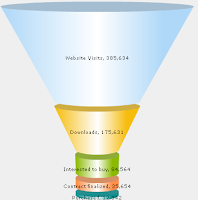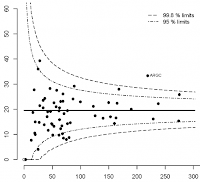At work, people are using more and more confidence intervals or funnel plots in their data as part of their decision making processes. Which is great!
However I think that putting them on a chart can lull people into a false sense of security. Those little lines can legitimise the labelling of points of data as outliers. People take action and make decisions based on it, so they can be dangerous. It's important to get it right, and often assumptions are made and analysis copied without much thought.
Here are the 3 of the most common mistakes I've seen:


